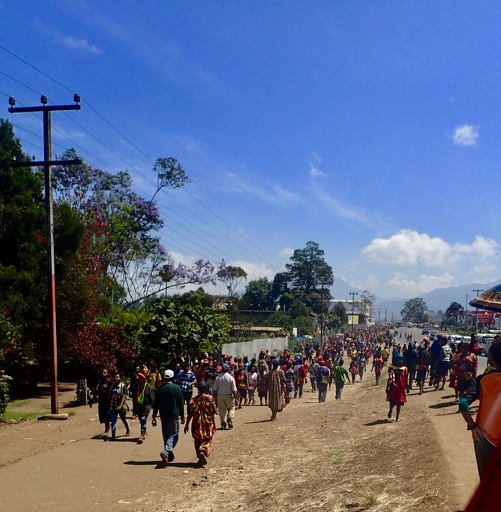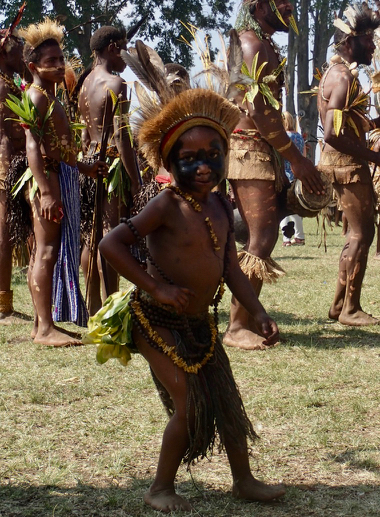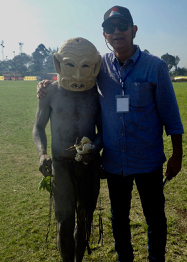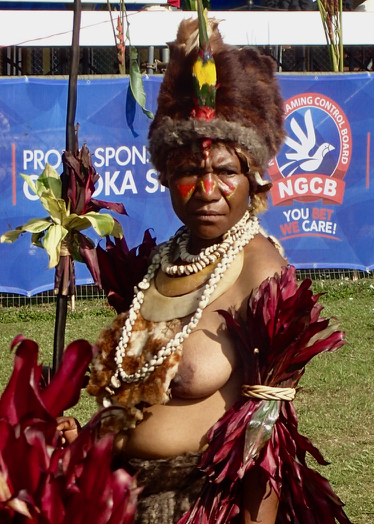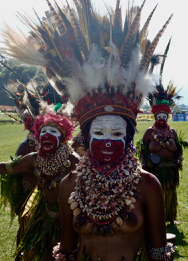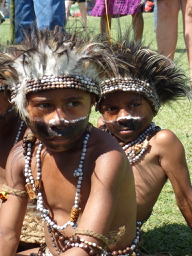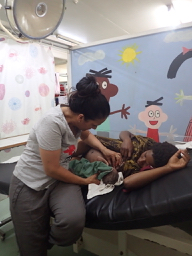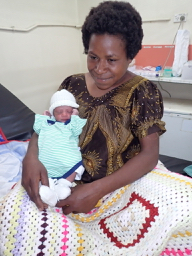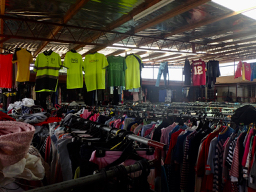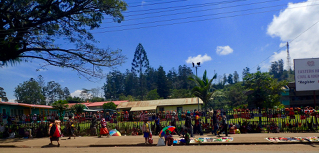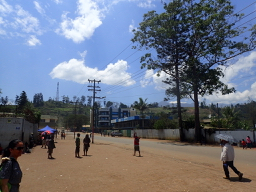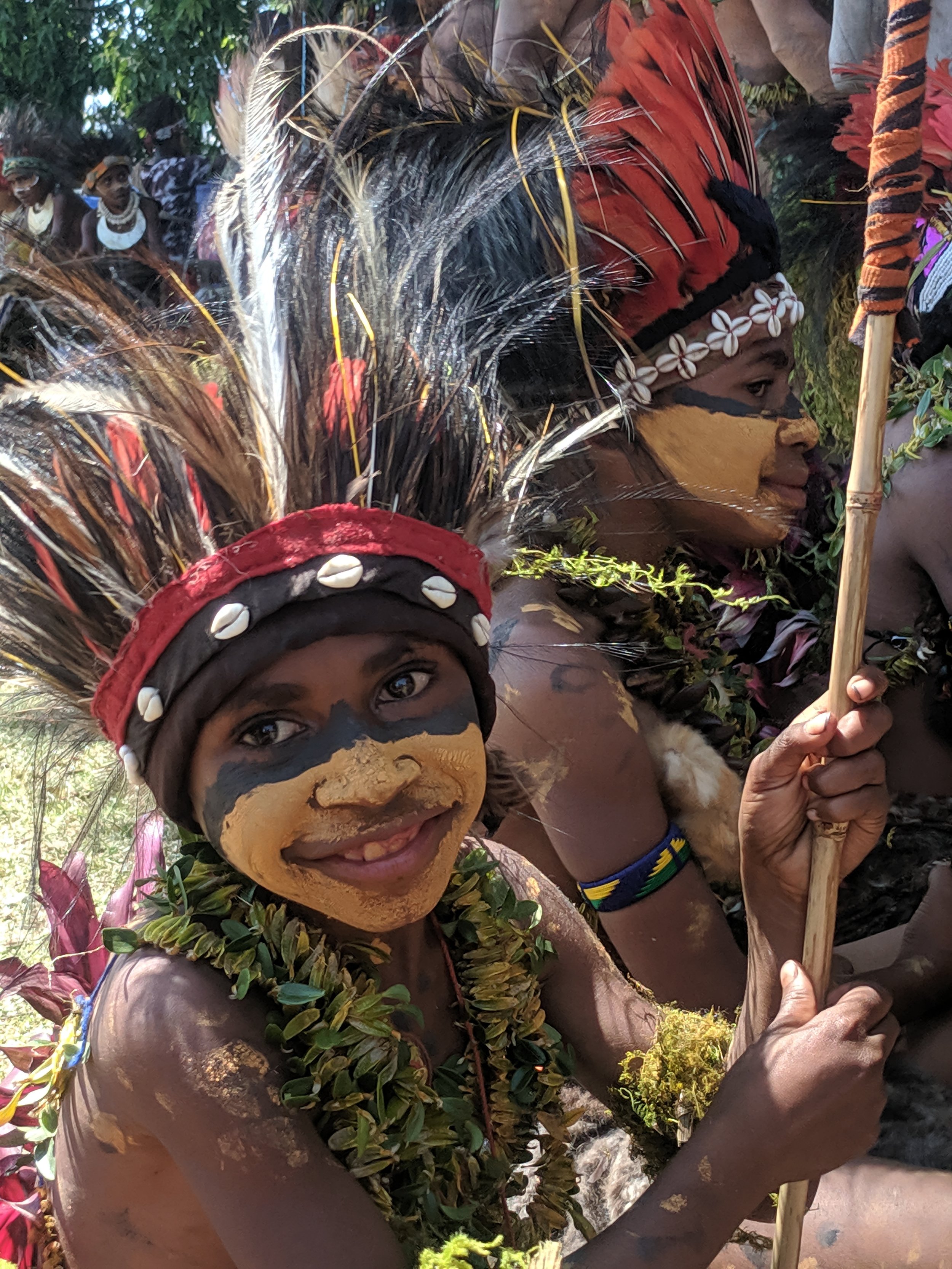The weekend bought in the show. The town is extremely busy, the streets are full of people – walking, singing, chanting, selling and eating (lots of beetle nut!) On Saturday Marie and I went second hand clothing shopping – there are huge warehouses full of clothing from Australia and NZ, we wondered around town and then prepared to pick up Leslie (Treasurer) and Moale (Marie’s Step daughter) and join Ricky’s (Cultural Liaison) family and friends for a gathering at Ricky’s family home (a 5 minute walk from the hospital). We have been so well looked after by family and friends here; Marie, Dr Hoffman and Dr Laurie have done a great job in interweaving The Highlands Foundation into the community here, as have volunteers following them. But the hospitality afforded by the people here is so lovely. A huge spread was put on, BBQ local vegetables . . . . . . . . .. . . . A beautiful welcome to Goroka.
Sunday morning and we were up early to head to the Goroka show. A gathering of communities from the Eastern Highlands and further afield (Mt. Hagen, Medang, Mendi and Sepik) to compete in a Sing Sing festival. The show was started y missionaries in the 1950’s for communities to come together and show their culture proudly. There is also a market and other recognisable show features; a flower display and competition, food market, simple games (throw a Basketball into a netball ring 20m away from 1K and win 20K), and community information stalls.
The experience was quite overwhelming; the costumes, the singing and dancing, the tourist presence and the local community all coming together. A total sensory overload. I felt so privileged to be a part of such an event.
The afternoon bought some rest, a talk about infection control with Margie and how I could help with some of the tech side of improving the auditing abilities of the hospital in relation to hand hygiene. I would fix their spreadsheets and attempt to connect a printer. More challenging than it sounds with no internet connection.
Monday was independence day. I woke to make pancakes for the kids and then headed to the basement office to start helping with the computer and spreadsheets. This would take the better part of the day. There was some success – with the spreadsheets, but the computer issues included needed to take the computer up to the IT room and connect it and see what could be done.
The afternoon was spent back in the labour ward. Women had just had babies and were labouring. We gave a girl who came with nothing a Mother and Baby pack, helped to get the baby feeding (he was very small, 2.5kg). Once he attached he sucked strong for such a little boy, he was going to be OK. This was her first baby.
Another woman had also birthed a small baby, her 5th. He was sluggish. Remembering my breastfeeding classes (and the challenges I had feeding my babies) I was able to help get her baby feeding (firm push to tilt his head, nipple to nose and firmly shove!). She had very little milk supply, but was keen to get help to get things started. She was a concerned Mum who know what should be happening. He fed and then they both rested.
The experience in the labour ward is bitter sweet: The women come in and have to be very self sufficient. They go through most of their labour independently, with midwives and nurses popping their head in and taking some measurements. There is no back rubbing or taking about breathing and little reassurance. They are not offered water. They are required to bring in their own plate to receive rice when it comes around (the plates in the ward disappear. There were no containers around, so one of the mothers just missed out.)
Having babies is messy business. The labour ward is the only ward to supply linen (a sheet), many women leak amniotic fluid, on the bed and floor. They clean this up themselves. The toilets have been closed for some reason, so they pee into one of the cleaning sinks in the open ward. These women are tough and just get on with it. They move into the postnatal clinic an hour or so after birth and leave the following morning. If their baby requires the special care nursery the mothers stay in the postnatal ward, they are encouraged to spend time with their babies and to feed them by hand expressing, especially if they are very small.
Babies end up in the Special Care Nursery if they are low birth weight (under 2.5kg), premature (under 37 weeks) or have some kind of sepsis (meconium aspiration that can lead to pneumonia). But it was clear that often their dating is imprecise.
The ward has little resources to make things easier for the women, nurses and midwives; no hand soap (but alcohol hand rub was available), no towels or cloths to wipe beds for women, no light for suturing (we bought some head torches), no cups for water (we did find a couple), no pillows.
What was available were birth packs (including scissors, scalpel, cord clamp and two stainless bowls ), a dopler to hear the babies heart rate (1 for the ward), Vit K with Hep B for the babies, Syntosinon for the women, catheters, IV fluid drip and stand.
The staff are doing the best they can with the little they have, but there still seems that there could be room for a little more care and cleanliness (for example, keeping the mop bucket clean with water (I could not find any soaps to clean these). The midwives/nurses have a reputation for being hard on the women, especially out in the rural centres. I definitely didn’t experience this – the midwives on the ward were attentive, but I can see how culturally the women to not receive much positive communication through the process.


